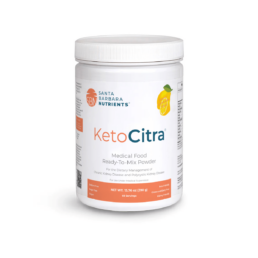The human gut is home to a significant number of bacteria that are essential for good health. In fact, in recent years, scientists have found a link between these bacteria and the risk of diabetes, heart disease, dementia, depression and chronic kidney disease. Here we will discuss what is described as the gut-kidney axis.
The ecosystem of bacteria lining the gastrointestinal (GI) tract is referred to as the microbiome. For the most part, these bacteria are beneficial, and contribute to our health and wellbeing. However, sometimes the wrong bacteria (or other organisms like yeast or parasites) can outgrow the “good” bacteria. When that happens, it’s called dysbiosis.
Dysbiosis and Kidney Disease: The Gut-Kidney Axis
Recent studies have demonstrated a close relationship between the quality of the microbiome and the health of the kidney. This relationship has been called the gut-kidney axis.
According to this research, those with a healthy microbiome, abundance of good bacteria and no overgrowth of bad bacteria, are less likely to develop chronic kidney disease. In fact, the presence of certain strains of bacteria in the gut can actually slow the progression of chronic kidney disease and even reduce the need for dialysis.
This is extremely significant because it means we can use dietary interventions to reduce the risk of a life-threatening disease that affects 20 million Americans.
Fiber and a Healthy Microbiome
For a healthy microbiome to flourish, the environment of the GI must be conducive to grow normal strains of gut bacteria. The composition and function of these bacteria depend on the available nutrients. Normal gut bacteria thrive when supplied with fiber. This “bacteria food” is called prebiotics. depend on fibers in the diet. For example, fruits and vegetables are great prebiotic sources.
But that’s not the only benefit of eating a high fiber diet. Fiber acts as a “net,” catching and removing toxins in the gut to make sure they don’t cause damage. This is especially significant in kidney disease where increased of toxins such as uric acid, oxalate and urea leads to worsening of the disease. This creates an environment where “bad” bacteria that feed on these toxins flourish in the colon (lower intestines) instead of the “good” ones that consume fiber.
Therefore, increased consumption of fiber-rich foods helps in two ways: First, it creates a net that helps to remove the excess toxins in the feces. Second, it helps to feed the beneficial bacteria and create an environment unfavorable for the growth of the “bad” bacteria.
Recommendations for a Healthy Gut
1. Focus on fiber and nutrient-dense foods. Reduce your intake of starchy veggies and eat more dark leafy greens (like spinach and romaine), cruciferous veggies (like broccoli, cauliflower, and kale) and fresh whole fruit (but limit to two servings per day).
2. Add food sources of probiotics to your diet, including fermented vegetables and drinks like raw sauerkraut, kimchi, pickles, apple cider vinegar, and kombucha. It’s recommended these are eaten raw because pasteurization process will destroy the bacterial content of these foods.
3. In general, reduce processed carbs, like bread, cereals, and high sugar foods. These types of foods are usually low in fiber and help to contribute to starving out the beneficial bacteria.
4. Drink plenty of water and ensure daily regular bowel movements.
Diet and lifestyle changes can be difficult to do and maintain on your own. We encourage you to seek out the support of a functional medicine-trained nutritionist that specializes in kidney disease and familiar with using food interventions to address the gut-kidney axis.
References
Cani PD, Osto M, Geurts L, Everard A. “Involvement of gut microbiota in the development of low-grade inflammation and type 2 diabetes associated with obesity.” Gut Microbes, 2012: 3:4, 279-288, DOI: 10.4161/gmic.19625.
Kieffer, DA., et al. “Resistant starch alters gut microbiome and metabolomic profiles concurrent with amelioration of chronic kidney disease in rats.” Am J Physiol Renal Physiol, 2016: 1;310(9):F857-71. doi: 10.1152/ajprenal.00513.2015.
Moraes, C., et al. “Trimethylamine N-Oxide From Gut Microbiota in Chronic Kidney Disease Patients: Focus on Diet.” Journal of Renal Nutrition, 2015: Vol 25, No 6: pp 459-465 http://dx.doi.org/10.1053/j.jrn.2015.06.004.
Ramezani, A., Raj, D. “The Gut Microbiome, Kidney Disease, and Targeted Interventions.” J Am Soc Nephrol, 2014: 25: 657–670.
Rossi M, et al. “The Kidney–Gut Axis: Implications for Nutrition Care.” Journal of Renal Nutrition, 2015: Vol 25, No 5; pp 399-403.
Rossi, M., et al. “Synbiotics Easing Renal Failure by Improving Gut Microbiology (SYNERGY): A Randomized Trial.” Clin J Am Soc Nephrol, 2016: 11: 223–231, doi: 10.2215/CJN.05240515.
Ulluwishewa, D. “Regulation of Tight Junction Permeability by Intestinal Bacteria and Dietary Components.” Journal of Nutrition, 2011: 269-776.



